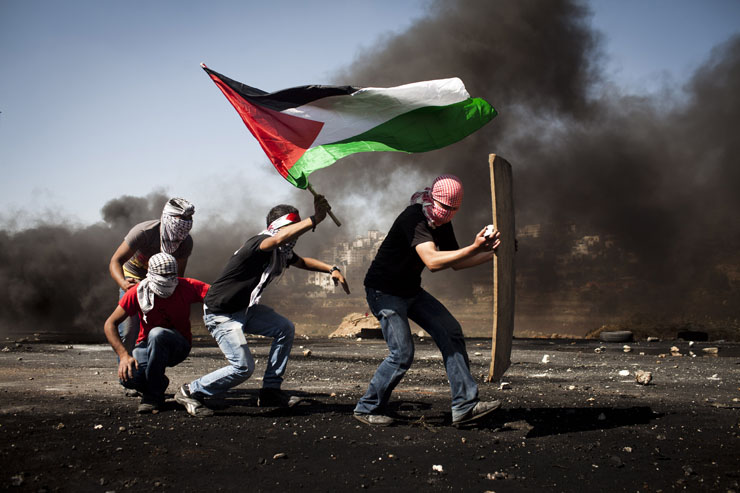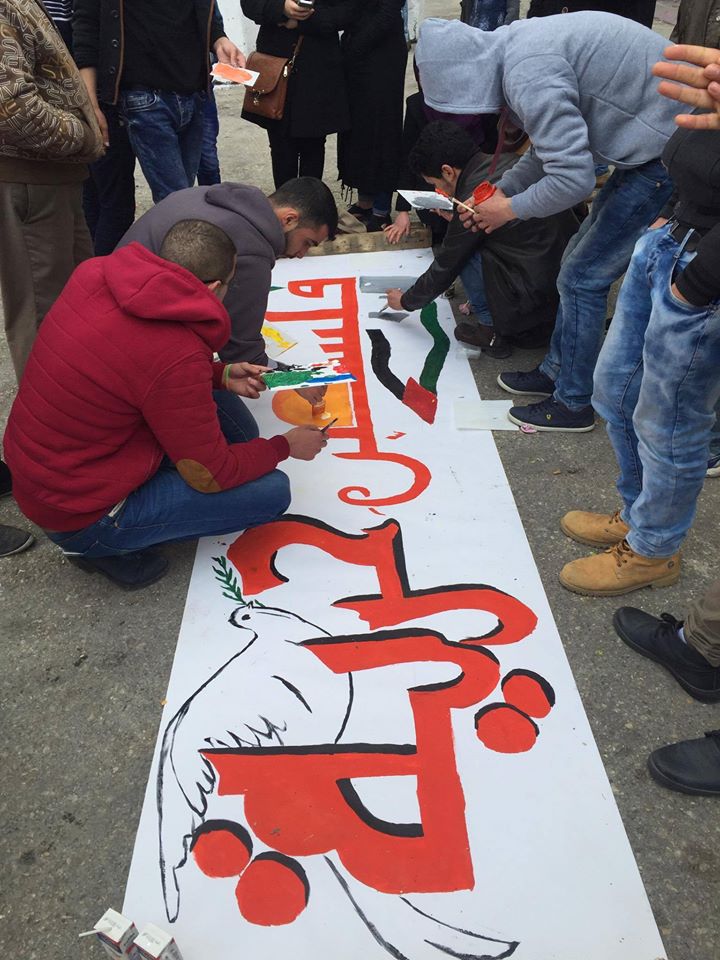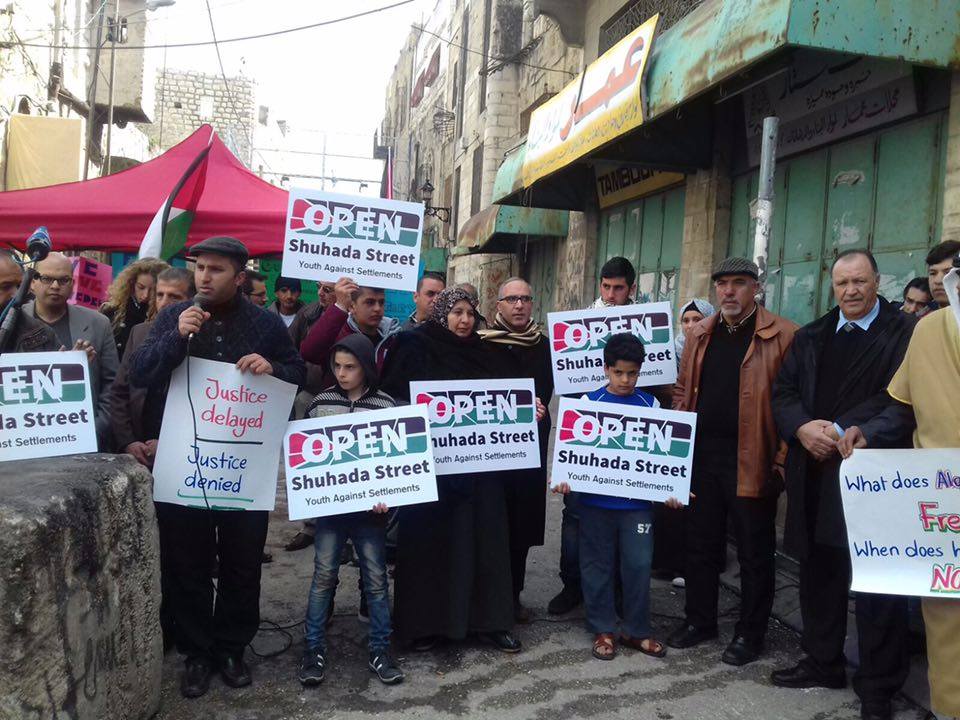Tag: Stun Grenades
-
New stun grenades used at Ofer military prison demonstration
26th March 2016 | International Solidarity Movement, al-Khalil team | Ofer, occupied West Bank On 25th March 2016, Israeli forces at Ofer military prison injured 8 Palestinians with various kinds of weapons, and later on attacked the nearby village of Beitunia, injuring even more. A demonstration against the Israeli military occupation and for the freedom…
-
Peaceful painting-activity met with violence by Israeli army
21st February 2015 | International Solidarity Movement, Al-Khalil team | Hebron, occupied Palestine On Sunday the 21st of February, the people of Hebron along with fellow activists gathered for part of a week long campaign against occupying Israel to show solidarity and oppose the closure of Shuhada Street to the Palestinian people. Shuhada Street has…
-
Youth Against Settlements holds press conference in front of Shuhada Street checkpoint to announce 2016 Open Shuhada Street campaign
20th February 2016 | Youth Against Settlements | Hebron, occupied Palestine Youth Against Settlements held a press conference in front of the Shuhada Street checkpoint to announce the beginning of the Open Shuhada Street Campaign. Over a hundred people attended. Palestinian TV, AL-Quds TV, and other local and international media organizations were present. Youth Against…



